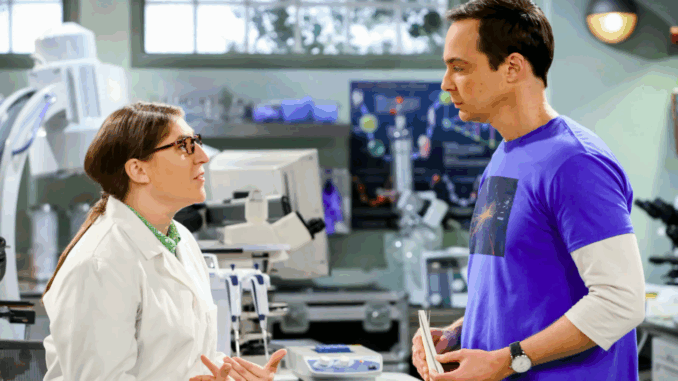
Making Physics Funny: An Unlikely Mission
It’s not easy to make quantum mechanics the punchline of a prime-time sitcom. Yet The Big Bang Theory turned particle physics, string theory, and cosmology into weekly entertainment for millions. While Sheldon Cooper’s whiteboard equations and lectures on multiverse theory often seemed like humorous nonsense, they were far from fictional gibberish. Behind the scenes, a dedicated science consultant worked to ensure that every formula, term, and reference was rooted in real science — a rarity in television.
Dr. David Saltzberg, a professor of physics and astronomy at UCLA, served as the show’s scientific advisor for all 12 seasons. Every time Sheldon or Leonard described a complex phenomenon, Saltzberg had not only reviewed the lines but often provided the equations seen scribbled on whiteboards in the background. That quiet dedication made The Big Bang Theory one of the most scientifically authentic comedies in TV history — and helped spark real-world interest in the sciences.
From Schrödinger’s Cat to the Large Hadron Collider
The show’s scientific references were rarely decorative. Some of the most famous gags were based on actual principles. One of the earliest — and most beloved — examples is Sheldon’s explanation of Schrödinger’s cat to Penny. He uses the paradox to explain why Leonard dating her could either work or not work, depending on “whether the cat is alive or dead.” It was a hilarious metaphor, but it also introduced millions to quantum superposition, an idea typically reserved for college physics lectures.
Later episodes tackled more current topics, including the discovery of the Higgs boson at CERN’s Large Hadron Collider, the concept of dark matter, and the feasibility of a space elevator. Saltzberg ensured these topics weren’t just buzzwords — he embedded real scientific debate into the script. The show’s writers would often ask, “What are scientists currently excited about?” and then build plots around emerging theories or recent breakthroughs.
Why Scientists Loved the Show — And Some Didn’t

While The Big Bang Theory had its critics, especially regarding early portrayals of gender and social awkwardness, many scientists championed the show. Not only did it make science relatable, but it celebrated intellectualism in a way that felt rare for network television. Sheldon, Leonard, Raj, and Howard weren’t mocked for being smart — they were the heroes. The show turned scientists into cultural icons.
That said, not all feedback from the academic community was glowing. Some critics argued the show perpetuated the “mad genius” trope, particularly through Sheldon’s eccentric behavior. Others felt that while the science was accurate, the social dynamics within academia were overly simplified or exaggerated for laughs. Yet despite these concerns, most agreed that the show raised public visibility for physics, engineering, and astronomy in an unprecedented way.
The Classroom Effect: Real-World Influence in Science Education
Perhaps the most surprising result of the show’s science-forward approach is its lasting effect on education. Several studies and surveys have noted increased enrollment in physics and engineering courses in the years following the show’s rise. High school science teachers frequently reported that students referenced The Big Bang Theory in class — sometimes asking about concepts they’d heard the characters discuss, from string theory to gravitational waves.
In 2015, the show’s creators and the Chuck Lorre Family Foundation launched a scholarship program supporting students in STEM fields, further solidifying the link between science fiction (or science-comedy) and science education. The program, funded in part by syndication revenue from the series, aimed to support young scholars who, like the show’s protagonists, dreamt of pushing the boundaries of human understanding.
When the Whiteboards Went Silent
When The Big Bang Theory aired its final episode in 2019, Dr. Saltzberg reportedly sent in one final whiteboard of real calculations — a farewell rooted in the same commitment to authenticity that defined the entire series. It marked the end of a unique collaboration between science and entertainment, one that set a precedent for how comedy can respect intelligence without sacrificing laughs.
In a media landscape saturated with fantasy, The Big Bang Theory proved that reality — when approached with curiosity and humor — can be just as fascinating. The formulas were real. The jokes were smart. And the legacy continues to echo in classrooms, labs, and maybe even the next Nobel Prize winner who grew up laughing with Sheldon Cooper.
